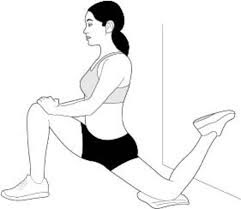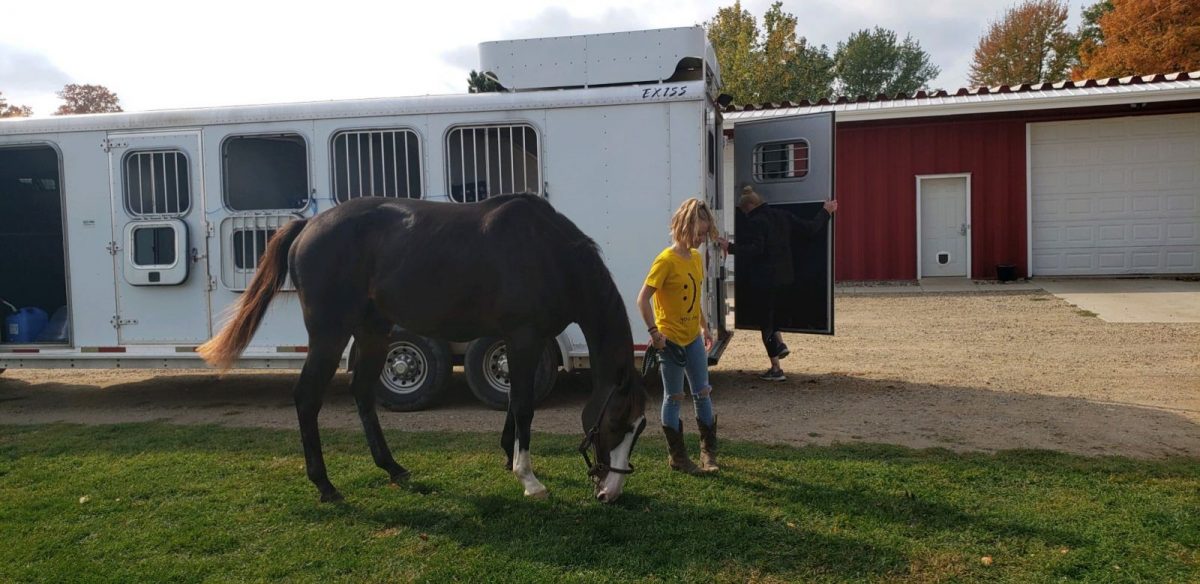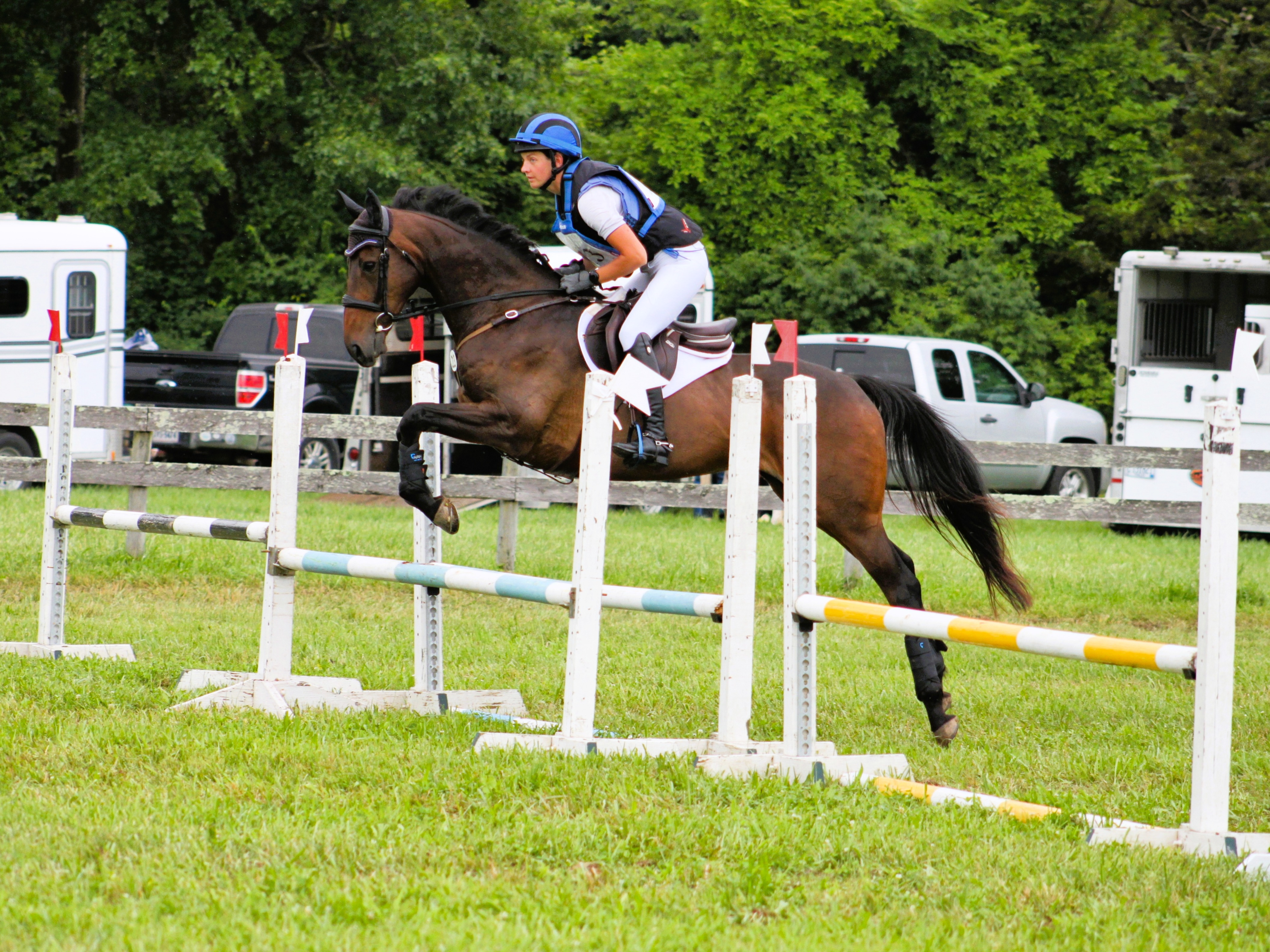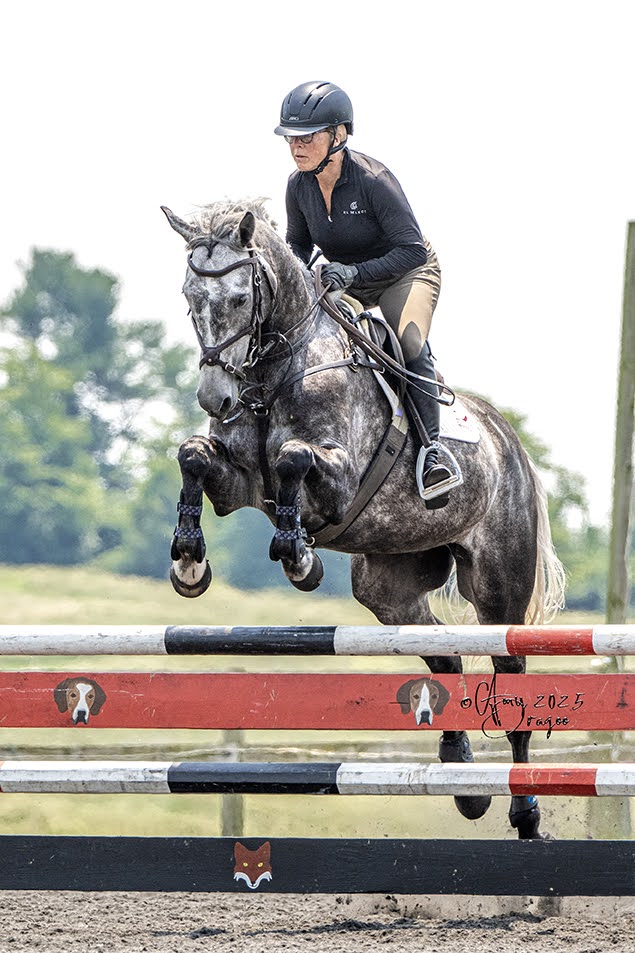
Kate Chadderton and Crescenda, Crescenda (Contratto x Gi Gi Giselle/Grandom), one horse sent to Kate to start her career. Photo by Brant Gamma Photography.
It was equal parts happenstance and a demonstration of the positive power of social media that brought a dark bay new ride to Kate Chadderton’s barn in 2019.
Kate, who is based in Woodbine, Md., had just returned from an unsuccessful horse shopping trip in Europe when she kicked back at a bar with some friends. Bemoaning the lack of success on her trip, she pulled up her Facebook app and typed up a post. Would anyone happen to be connected to a talented young horse with upper level potential? While the U.S. may not be as geographically friendly for horse shoppers as smaller countries in the UK, there is still much “homegrown” quality to be found. Perhaps she’d have a bit of luck by reaching out to the vast internet.
And so it would be this innocuous Facebook post that connected Kate with Brandi Smith of Fox Lair Sport Horses in White Plains, Md. After Kate paid the farm a visit and sat down with the team, a partnership ensued. Soon enough, young horses were being sent off to Kate to begin their careers as sport horses.

Crescenda as a foal. Photo courtesy of Fox Lair Sport Horses.
“Our program was started in 2010 and is dedicated to breeding and training Hanoverians, though we’ve begun to branch out to other registries in recent years,” Brandi explained. She and her breeding manager of seven years, Meghan Palensky, share a passion for equine matchmaking and producing. Working for Valerie and Dr. Ken Fox to breed quality horses that could eventually be either sold, kept for future breeding, or produced to be a part of the family’s competition string, the two women have established a robust, boutique operation featuring top-shelf sport mares.
“I started teaching their daughter, Katie Fox, who had ambition to be a grand prix show jumper,” Brandi said. “Once her parents figured out how expensive the sport is, they decided that breeding their own horses would be the way to go. And now we’ve built this small little empire.”
A large obstacle often faced by breeders in the U.S. is finding a way to properly produce and market these young horses. This process is risky, and it’s expensive. And while breeders want to market to amateur riders, they often have difficulty reaching this target demographic with young horses in need of training. Within this gap, a growing number of professionals are seizing opportunity to collaborate with breeders and produce young horses, the budding partnership between Kate and Fox Lair Sport Horses as just one example.
We asked Kate and Brandi for their perspective on breeding and selecting quality young horses for eventing purposes. We’ll continue to feature other breeding programs and young horses coming out of them in forthcoming articles here on EN (tip me at [email protected] if you have a lead!).

Photo by Brant Gamma Photography.
What qualities do you as a rider look for in an event prospect?
Temperament, Kate says, is perhaps one of the most vital components she looks for in a prospective event horse. “I’ve ridden a variety of horses to the Advanced level, and the commonality among them is their desire to do the sport,” Kate explained. “It’s the attitude to please and the desire to do the sport that I’m looking for.”
For breeding purposes, Kate emphasizes the importance of having a mare with a good temperament; after all, the foal spends all of its formative days with its mother. An even temperament can be passed on through bond.
This concept is echoed by Brandi and Meghan, who have spent years building up a quality broodmare barn. “Like many breeding operations, we don’t want to just breed to one stallion every year,” Brandi said. “We want different options, so it’s easier for us to have a large group of mares.”
Kate also recommends building this relationship yourself when you’ve got a new young horse. “Find out what they like, what they don’t like,” she explained. “I had one mare who was obedient but just didn’t really care about what I was asking. So I happened to spend some time grooming her one day, and I discovered that she went better if I was spending that extra time with her rather than having a working student get her ready. Just little things like that.”
What are some training tips for starting a young horse’s education?
It depends on temperament, Kate says. For example, Crescenda, the 2016 mare sent who began her eventing career under Kate’s tutelage, has a very curious temperament so “I kind of go down whatever path she wants to take me,” she explains. If a horse is curious and can hack out, do so. “At that age, I don’t think you can do that much training as far as schooling the dressage, it’s more just making them happy with being ridden and enjoying their job, keeping them happy. They can learn through play.”

Photo courtesy of Fox Lair Sport Horses.
How can riders and breeders work together more here in the U.S.?
Finances, Brandi and Meghan agree, pose the biggest challenge. It’s a financial risk for both a breeder and a rider to take on a young horse that may or may not show prowess for a sport career. Many breeders, as a result, find themselves loaded with young horses that could be matches for amateurs down the road – with a little polish. And that polish can be hard to find when professionals have their own bills to pay, their own next big star to find.
“Europe is several hundred years more advanced than us with breeding programs that are more established,” Brandi explained. “It’s hard to be a breeder for business here, you have to make money somehow. It’s hard to get these horses to professionals. So the breeders have to be able to financially support these horses until they’re three, four, five years old and then they have to afford to send them off to be started.”
Much of the risk, then, falls on the breeder. Brandi says she is grateful to have found Kate, happenstance and all, as a potential pipeline to send horses through. Some may show talent for the upper levels and stay on with her, others may move on to dabble in other disciplines or be sold. But regardless of the outcome, it’s a moving system that shows promise in terms of promoting sustainable growth. “I think the biggest thing is if we could get more professionals involved with the breeders to even out the risk factor, then that helps cover the amateur market because now more horses have been professionally produced.”
“We got lucky with Kate,” Brandi and Meghan continued. “She wanted to be in a relationship with a breeder. We would love to see more breeders getting in with trainers – that’s going to be the way to grow the breeding in our country.”
























































